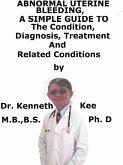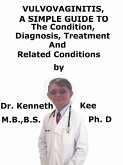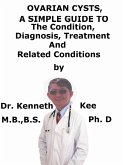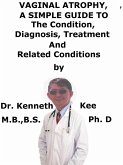The more important issue here is about the suffering of all females after puberty.
The hormones that regulate the female's child bearing ability not only affect her uterus but also the breast and all this in preparation for pregnancy and breastfeeding.
In the case of the uterus the hormones first prepare the lining of the womb for pregnancy but when that do not happen cause the inner lining of the womb to slough off and flow out as menstrual blood.
Pain can occur during the menses.
Similarly the hormones prepare the breast for producing milk by swelling the breast tissues with secretions and extra glandular cells.
Again if pregnancy does not occur the unwanted cells in the breast are programmed to die and are broken down to fragments which can result in fibrosis injuring the ducts and clusters of dead glandular cells that can block the ducts.
When there has been tissue injury and scarring in the breast, these secretions may be trapped in the glandular parts of the breasts, thus resulting in the formation of fluid-filled sacs called cysts.
There may be overgrowth of the epithelial cells and abnormal cells, a process called atypical hyperplasia.
This can produce breast lumps normally benign but can turn malignant (cancer) later on.
The condition mainly involves women between the ages of 30 and 50, and is likely to resolve after menopause.
Fibrocystic breast disease (FBD) is now referred to as fibrocystic changes or fibrocystic breast condition, is the most frequent cause of "lumpy breasts" and involves more than 60% of women.
It is not a disease, but a condition.
Breast changes recognized as fibrocystic breast condition can be normal.
They can still induce breast pain, tenderness and lumpiness, particularly in the upper, outer area of the breasts.
A woman can have more fibrocystic formation in one breast than in the other.
The less affected breast often becomes worse over the years, and eventually both breasts become almost equally fibrocystic.
It is rare in women after menopause unless they are taking estrogen.
Causes
The exact cause of the condition is not known.
Fibrocystic breast condition is a progressive process that mainly affects women over 30 years of age.
Fibrocystic breast tissue is made of these components:
1. Fluid-filled round or oval sacs (cysts)
2. A prominence of scar-like fibrous tissue (fibrosis)
3. Overgrowth of cells (hyperplasia) lining the milk ducts or milk-producing tissues (lobules) of the breast
4. Enlarged breast lobules (adenosis)
More than 50% of women will form fibrocystic breast condition at some point in their lives.
Symptoms may be:
1. Pain or discomfort in both breasts
2. Pain that often comes and goes with the period, but may last through the whole month
3. Breasts that are full, swollen, or heavy
4. Pain or discomfort under the arms
5. Thick or lumpy breasts
6. Discharge from nipple
Diagnosis:
The doctor can diagnose fibrocystic breast condition by doing a physical breast examination.
The doctor may also order a mammogram, ultrasound, or MRI to get a better look at any alterations in the breasts.
An ultrasound scan or tissue biopsy may be done to exclude the possibility of breast cancer.
Treatment
Most women who have fibrocystic breast condition do not need invasive treatment.
Painkillers normally effectively alleviate any pain and discomfort.
The patient can also wear a well-fitting, supportive bra to decrease breast pain and tenderness.
Some women find that the application of warm or cold compresses alleviates their symptoms.
For more severe symptoms, the doctor may prescribe hormones
TABLE OF CONTENT
Introduction
Chapter 1 Fibrocystic Breast Condition
Chapter 2 Causes
Chapte...
Dieser Download kann aus rechtlichen Gründen nur mit Rechnungsadresse in A, B, CY, CZ, D, DK, EW, E, FIN, F, GR, H, IRL, I, LT, L, LR, M, NL, PL, P, R, S, SLO, SK ausgeliefert werden.









